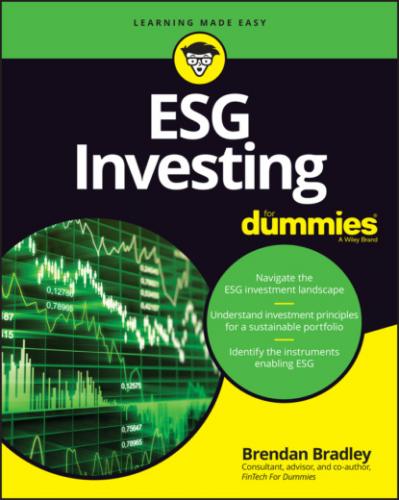Meeting corporate governance requirements
While corporate governance practices have always been a key valuation factor for companies, for fixed income as much as equities, governance has also received a lot of attention during the COVID-19 pandemic — not only for how corporate boards are ensuring the health and safety of their employees and business partners, but also their wider reach into their supply chain management and how they are coping. At a time when their employees may be on government-supported job retention schemes, attention is also being paid to how management is playing its part in executive compensation plans.
The old days of shareholder resolutions serving as an appliance to identify and inspect governance issues — leading to reform in company practices and the acceptance of standards (for example, annual director elections, board gender diversity, and so on) — have changed to a more proactive stance, where asset managers are more engaged and lead policy initiatives and change within some organizations. This greater engagement has led to joint approaches on corporate access, from analysts on the ESG team to traditional financial analysts. Proposals for enhanced ESG disclosures from companies in their sustainability reports will also allow asset managers and owners to further incorporate ESG risk assessments into their investment decisions.
Investors are also pushing for executive pay to be tied to ESG initiatives, so that boards will be compelled to achieve social and other key targets, rather than paying “lip service” to ESG integration. Already, it’s clear that governance is much more about stewardship (see Chapter 18), assuming a given level of accountability as well as responsibility to generate sustainable benefits, rather than hiding behind the preordained rules that have been handed down through the organization. Some would argue that ESG could be transformed into ESS (Environment, Social, and Stewardship) to recognize the role of stewardship in this process. Regardless, there should be a seamless link between stewardship and wider ESG integration, with investors systematically assessing companies based on ESG risks.
Flip to Chapter 5 for the full scoop on the governance factor in ESG.
Using International Standards to Determine ESG Objectives
The global regulatory ecosystem is moving fast, with many countries upholding ESG requirements in regulations. A recent study suggests that in the last decade, governments have enacted over 500 new measures globally to advocate ESG issues. Numerous market participants feel that regulatory developments are a key driver in the uptake of ESG investing. While many voluntary disclosure bodies have contributed to an increase in the availability of ESG data by pushing for greater disclosure and creating frameworks and standards, and therefore the success of the ESG explosion in recent years, the sense is that we’re at the point where we need further mandatory disclosure requirements.
However, a group of five sustainability standard-setters has declared their own intent to collaborate better, appearing to accept the complaints of “reporting overload” with the “competing initiatives” concerns. It was felt that the plethora of entities was holding up progress and encouraging jurisdictional fragmentation. However, this statement of intent comes at a time when the European Union (EU) has set in motion a large-scale legislative program to make ESG concerns a central piece of regulation in the financial services industry, which will further increase disclosure requirements. Ultimately, the market should put a common, standardized disclosure mechanism in place, whereby material reporting will be unearthed that provides more informed input to the ESG rating models, which should lead to greater consistency on ESG scores.
The following sections emphasize the increasing shift to regulatory oversight on sustainability as well as the roles played and foresight shown by the United Nations and the disclosure reporting standard-setters in building the agenda that has contributed to the success of ESG.
Leading the charge: European legislation on ESG
In Europe, the EU Commission has introduced new disclosure requirements related to sustainable investments. The Sustainable Finance Disclosure Regulation (SFDR) requires all financial market participants in the EU to disclose on ESG issues, with additional requirements for products that promote ESG characteristics or that have sustainable investment objectives. This regulation aims to limit the risk of greenwashing by financial market participants while increasing transparency, which allows investors to better understand how ESG and sustainability influence their investments.
Parallel to this, the EU Commission has also introduced the Taxonomy Regulation, which establishes an EU-wide taxonomy (akin to a dictionary) of economic activities that can be viewed as environmentally sustainable, using reference to six environmental objectives. This will enable investors and clients to identify environmentally sustainable investments, while bringing greater clarity for asset managers.
The regulation was implemented around three pillars: the elimination of greenwashing (see Chapter 6), regulatory neutrality, and a level playing field for all investors. Added to this, the EU Commission has agreed to introduce new standards on climate change through the launch of two climate benchmarks: the EU Climate Transition benchmark and the EU Paris-aligned benchmark. The regulatory environment is clearly driving institutional investors toward a substantial change in ESG practices, but that might help them get ahead of regulation or mandatory reporting in other jurisdictions.
Ahead of its time: The United Nations
Starting early in the century, the formation of the United Nations Global Compact is a non-binding pact to encourage businesses worldwide to adopt sustainable and socially responsible policies and report on their implementation. See www.unglobalcompact.org/.
The Principles for Responsible Investment (PRI) initiative then corralled together a network of international investors to work to put the six principles into practice. The principles were developed by the investment community and signaled the view that ESG issues affect the performance of investment portfolios and therefore should be given suitable consideration by investors in order to fulfill their fiduciary duty. This allows investors to incorporate ESG issues into their decision-making and ownership practices and so better align their objectives with those of society at large. See www.unpri.org/.
The
